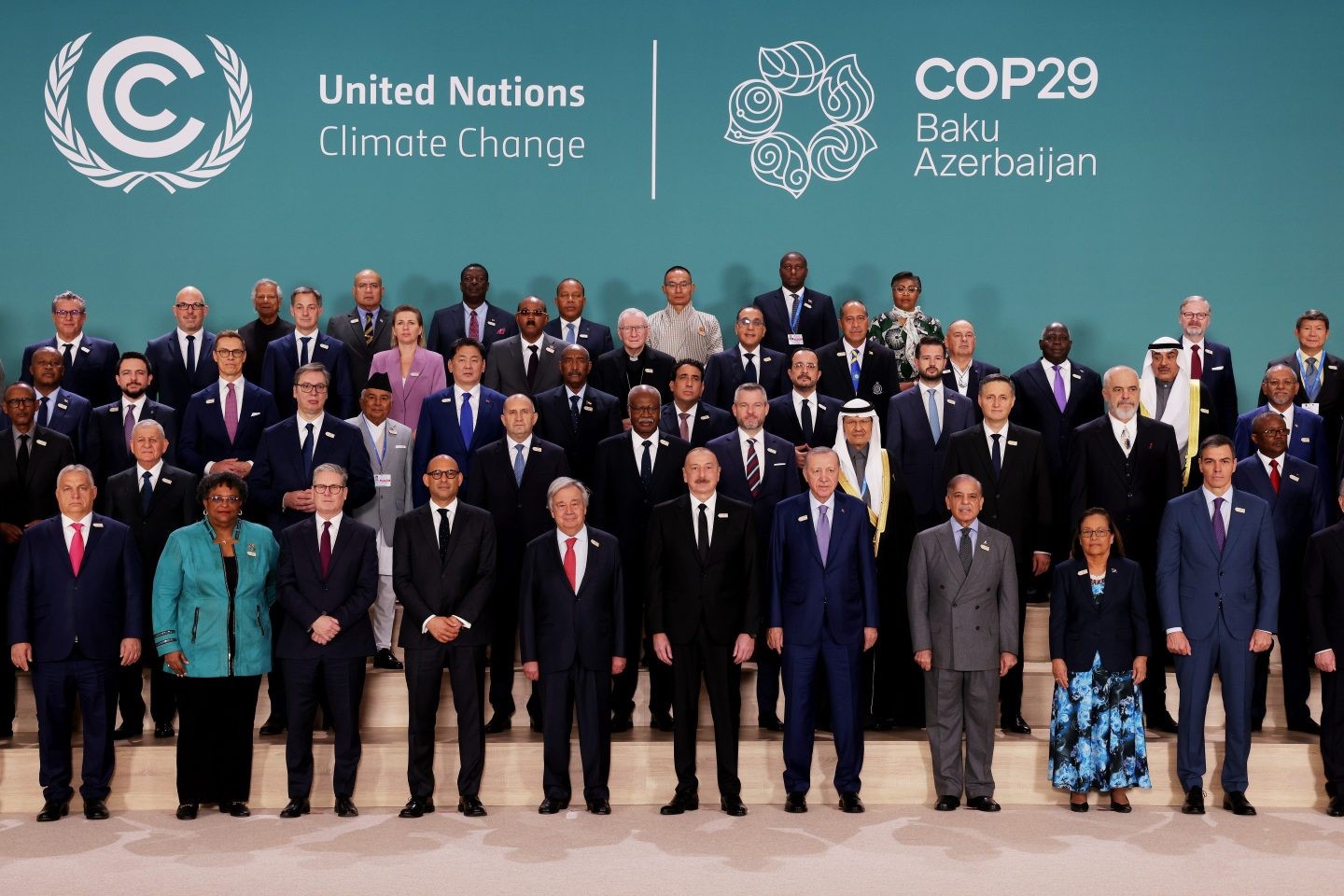
The COP29 Climate Conference, held in Baku, Azerbaijan, concluded with groundbreaking commitments aimed at addressing the urgent challenges posed by climate change. This pivotal summit, involving representatives from nearly 200 nations, highlighted critical issues such as climate finance, the effects of global warming, and adaptation strategies. The agreements reached at COP29 underscore a global commitment to safeguarding the planet for future generations.
Table of Contents
COP29 Climate Conference: Key Outcomes
Historic Climate Finance Goals:
A central focus of COP29 was the establishment of the New Collective Quantified Goal on Climate Finance (NCQG). This ambitious framework aims to:
- Triple public climate finance for developing nations, raising the annual goal from $100 billion to $300 billion by 2035.
- Mobilize a total of $1.3 trillion annually by 2035, combining public and private funding sources.
These measures are crucial in mitigating the impact of climate change on human health and enhancing global resilience against environmental disasters. Simon Stiell, Executive Secretary of UN Climate Change, described the finance goal as “an insurance policy for humanity,” emphasizing the importance of timely and full payments to meet these targets.
Advances in Carbon Markets:
One of the most significant achievements of COP29 was progress on Article 6 of the Paris Agreement, which governs carbon markets. After nearly a decade of negotiations, countries finalized frameworks to:
- Facilitate transparent country-to-country trading of carbon credits.
- Implement the Paris Agreement Crediting Mechanism, a centralized market designed to generate financial benefits for developing nations.
These mechanisms will accelerate the transition to renewable energy while ensuring strong environmental and human rights protections. Notably, the initiative also includes safeguards for Indigenous Peoples and local communities, ensuring projects align with their interests and provide recourse for grievances.
Strengthened Climate Transparency:
Transparent climate reporting took center stage at COP29. The implementation of the Enhanced Transparency Framework (ETF) ensures countries can accurately track progress on their Nationally Determined Contributions (NDCs). To date, 13 nations, including Azerbaijan, Japan, and Spain, have submitted their first Biennial Transparency Reports (BTRs), setting a precedent for other nations.
Transparent reporting will enhance accountability and guide international climate policies, ensuring the effective use of resources to combat the causes and effects of climate change.
Adaptation Milestones:
COP29 introduced the Baku Adaptation Road Map, outlining strategies to enhance climate resilience. Key highlights include:
- A dedicated support program for the implementation of National Adaptation Plans (NAPs) in least developed countries.
- High-level dialogues focusing on innovative financing and technical support for climate adaptation.
- A renewed focus on the Global Goal on Adaptation, advancing efforts to address challenges posed by rising sea levels and extreme weather events.
Building on Past Successes
The agreements at COP29 build upon significant progress from previous conferences. At COP27, nations established the Loss and Damage Fund, while COP28 delivered a global consensus to transition away from fossil fuels, triple renewable energy capacity, and enhance climate resilience. COP29’s achievements further solidify these commitments, ensuring that the global community moves closer to halving emissions by 2030.
Challenges and the Road Ahead
While COP29 marked substantial progress, challenges remain. Simon Stiell acknowledged that not all expectations were met, and critical issues still require attention at COP30, to be held in Belem, Brazil. Among the unresolved matters are strengthening NDCs and ensuring equitable access to resources for vulnerable nations.
Additionally, the International Energy Agency has projected global clean energy investments to surpass $2 trillion in 2024. This highlights the growing momentum behind the clean energy transition but also underscores the need for sustained collaboration among public and private sectors.
Inclusion and Participation
COP29 emphasized the importance of inclusivity in climate action. The conference provided dedicated spaces for Indigenous Peoples, youth, and local communities to share their perspectives. Notably, the Youth-led Climate Forum showcased the contributions of children as young as 10 years old, fostering intergenerational dialogue on climate solutions.
The adoption of the Baku Workplan and the extension of the Lima Work Programme on Gender and Climate Change reaffirmed the importance of diverse voices in addressing the climate crisis.
Conclusion
The COP29 Climate Conference represents a significant milestone in global climate governance. By setting ambitious climate finance goals, advancing carbon market mechanisms, and strengthening transparency, the summit has laid a robust foundation for future action. However, as Simon Stiell aptly noted, this is not a time for complacency. The journey toward a sustainable future requires unwavering commitment and collaboration from all stakeholders.
As the world looks toward COP30 in Belem, it is imperative to build on the successes of COP29 and address remaining challenges. The agreements forged in Baku offer hope for a future where the impacts of climate change are mitigated, and the benefits of clean energy are shared equitably.




